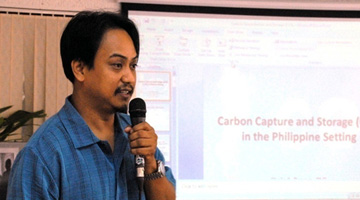 Is carbon dioxide sequestration in the Philippines possible?
Is carbon dioxide sequestration in the Philippines possible?
Dr. Chelo Pascua posed and answered the question when he presented “Carbon dioxide (CO2) sequestration potential in the Philippine geological setting” at a seminar held recently at the Philippine Council for Agriculture, Aquatic and Natural Resources Research and Development.
The youngest Balik Scientist to visit the Mariano Marcos State University, his presentation focused on the concept of carbon dioxide capture and storage (CCS).
CCS refers to a technology that attempts to prevent the release of large quantities of CO2 into the atmosphere from fossil fuel used in power generation and other industries.
By capturing, transporting, and ultimately, pumping CO2 into underground geologic formations, the gas is securely stored away from the atmosphere.
Incidentally, CCS is a low-cost mitigation technology for greenhouse gases (GHG) endorsed by the International Energy Agency (IEA). However, CCS is the only technology presently available to mitigate CO2 emissions from large-scale use of fossil fuel.
According to Pascua, the Philippines lies within a complex area of tectonism and volcanism called the Pacific Ring of Fire. In this context, according to the IEA selection criteria, the country does not meet the selection criterion set by IEA for for CCS.
This does not, however, deter the Philippines from becoming a developer and test bed of technology related to CCS. In fact, Pascua cited opportunities for CCS in the Philippines as the country needs to feed a growing energy-hungry population and industry.
He cited the following as storage options for the country: a) dry petroleum wells and other sedimentary basins, b) ophiolites (iron and magnesium rock formation), and c) geothermal wells, wherein ophiolites seem to be the most promising.
Dr. Pascua also explained that while other GHGs are as dangerous as CO2, the amount of these gases is incomparable to the significant amount of CO2 emitted in the country, especially by the agriculture sector.
